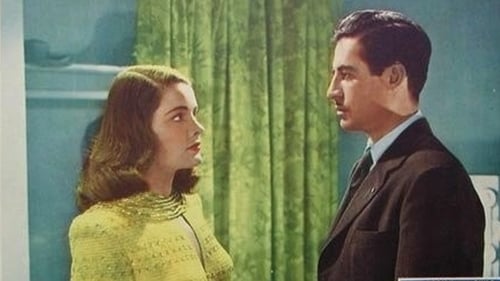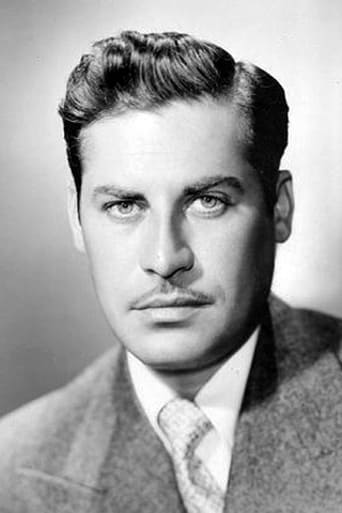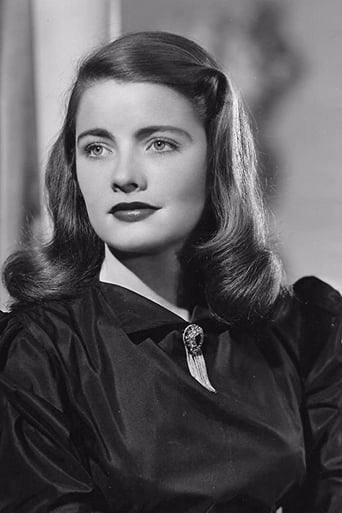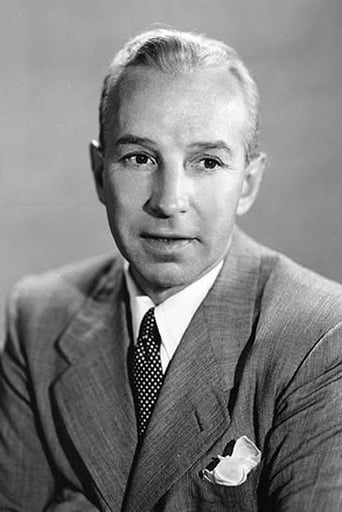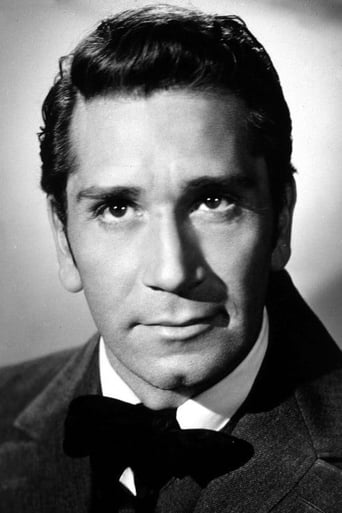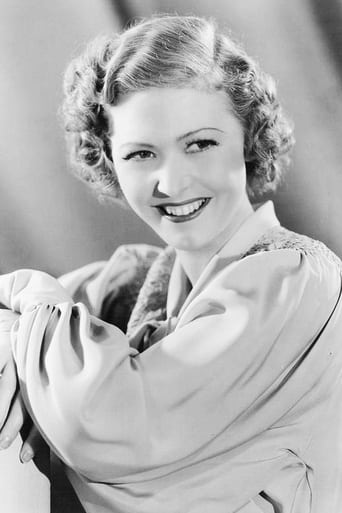Acensbart
Excellent but underrated film
Curapedi
I cannot think of one single thing that I would change about this film. The acting is incomparable, the directing deft, and the writing poignantly brilliant.
Hayden Kane
There is, somehow, an interesting story here, as well as some good acting. There are also some good scenes
Scarlet
The film never slows down or bores, plunging from one harrowing sequence to the next.
mrb1980
Amnesia is a great vehicle for screenwriters. It allows a story about someone who is menaced by bad guys but doesn't know why because he's forgotten his past. In this film, George Taylor (John Hodiak) returns from the Pacific war not even knowing what his true name is. After being discharged, Taylor attempts to recreate his past, getting involved with gangsters, $2 million of Nazi loot in a suitcase, and with the beautiful nightclub singer Chris (Nancy Guild). After a lot of fairly confusing twists and turns including a great scene inside a sanitarium, the film has an unexpected twist ending that sharp viewers will anticipate.Every time I see John Hodiak in a film I wonder what he would have accomplished, since he died so young. His body of work is very good and I don't remember any real losers he did. Nancy Guild is good as the woman who protects him while transforming from a tough gal to falling in love with Taylor. There's a very interesting scene which takes place in a 1940s L.A. Chinese restaurant.Lots of familiar faces pop up here: Whit Bissell (an ill-fated bartender); Sheldon Leonard (jealous and tough-guy husband); Lloyd Nolan (a detective, of course); Richard Conte (bar owner); Jeff Corey (bank teller); and Harry Morgan (bath attendant). The story is pretty confusing at times, and some of the characters don't make a lot of sense, but Hodiak is great as the amnesia victim who sometimes isn't the nicest guy around. It's a great example of B&W 1940s thrillers, so try to catch it.
dougdoepke
Ten minutes into this jumble and I thought the writers were being paid by the word, either that or they were trying to talk the audience to death. Which might be okay if the dialog added up to an interesting story. But instead, it goes off in ten different confusing directions not even a Rosetta Stone could unpack. The credits list five different writers, which is not surprising since they appear to be working in separate cities. Now, I don't expect every loose thread to get tied up, especially in noir. However, I do expect a general shape or coherence, which this screenplay unfortunately lacks. It's like a jigsaw without a concept.Leading lady Nancy Guild (Christy) does deserve some sympathy. This is her first movie and Fox thrusts her into a demanding role with lots of dialog. And that's the trouble. In her under-trained mouth lines of dialog sound just like that, lines of dialog. At times it works, but mostly it doesn't. She may look like Bacall—likely why she was promoted in the first place-- but lacks the needed smolder. Unhappily, her career proved downhill and short, so likely the resemblance was both a blessing and a curse.What the movie does have are some striking cameos—a cranky Henry Morgan, a sassy Margo Woode, a sweaty Sheldon Leonard, and in a part that steals the movie, Josephine Huchinson as Elizabeth. True to the scrambled screenplay, her wounded spinster sort of drops out of the sky. Nonetheless, catch her many nuanced expressions that are really quite touching. I just wish the editor or the director had cut the scene after it peaks since we've already gotten the idea. Then too, Nolan and Conte are quite good in their supporting roles, parts that each could probably do in his sleep. On the other hand, leading man Hodiak looks good in a suit, but like the disappearing man, has a presence that becomes fainter and fainter as time goes on. Perhaps he was as confused by the script as others of us.Now, I'm as big a fan of noir as anyone. However, I think this film proves an important lesson. Namely, there is more to noir than just a smoky aesthetic, a big-hair dame, and a catchy title.
kenjha
A war hero suffering from amnesia tries to figure out who he is. It gets off to an intriguing start, but soon runs out of steam and becomes much too muddled before reaching a predictable ending. Dour-faced Hodiak gives a one-note performance, lacking the looks and charisma to carry a film. Guild, making her film debut, is charming as a nightclub singer who inexplicably falls in love with Hodiak. There are good performances from Nolan and Conte; the latter would have been a more interesting choice for the lead role. Mankiewicz's screenplay includes some good lines but the plot is convoluted and confusing. He fares better in the director's chair, creating a solid film noir look.
JohnHowardReid
Few actresses jump from a thespic nowhere into a star role. You might count them on the fingers of one hand. But it happened to Nancy Guild. Signed to a Fox contract when casting director, Rufus Le Maire, spotted her picture in a 1946 Life magazine lay-out of current college girl dress fashions, Nancy jumped straight from Fox's dramatic school (where she spent "a few months as the star pupil") to the lead feminine role in Joseph L. Mankiewicz's Somewhere in the Night (1946). And she does well too. Extremely well by a rather difficult role. Is she a good girl, or one of the villains? Nancy plays it cool, which is a perfect choice, especially when surrounded by consummate scene-stealers like Richard Conte, Lloyd Nolan, John Hodiak and Fritz Kortner. But her debut proved to be the high point of her motion picture career. Next cast in a Fox "B", The Brasher Doubloon (1947) opposite George Montgomery's Philip Marlowe, she followed with a minor Dan Dailey 1948 musical, Give My Regards to Broadway. Fox then dropped her. At this stage, Orson Welles came to her rescue by offering her the part of Marie Antoinette in Black Magic (1949) in which Gregory Ratoff fronted for him as producer and director. (Ratoff actually did direct half the movie, but Welles handled all his own scenes and wrote some of his own dialogue). Although this United Artists release was anything but a success, Universal offered Miss Guild a contract. She played the main feminine role in Abbott and Costello Meet the Invisible Man (1951) and was then third-billed (Mark Stevens and Rhonda Fleming were the stars featured on all the posters) in Little Egypt (1951). Fourth billing in Francis Covers the Big Town (1953) and a minor role in Otto Preminger's 1971 Such Good Friends completed her motion picture career. Eight film roles, only one of which (her first) is of any importance. What a waste! Getting back to the rivetingly noir, Somewhere in the Night, this movie is not just an actor's heyday (which it is – you'll probably miss the clever way one of the players signals the plot to the audience in the first 15 minutes, so watch for it on a second view), but a photographer's and set designer's paradise as well. Mankiewicz keeps a firm control of both acting and atmosphere. This exceedingly well-produced movie always enjoyed a considerable cult reputation, which, for once, was thoroughly deserved. Full marks for a really solid script on which none other than leading novelist W. Somerset Maugham worked with Lee Strasberg (later to gain fame with his Actors Studio).

